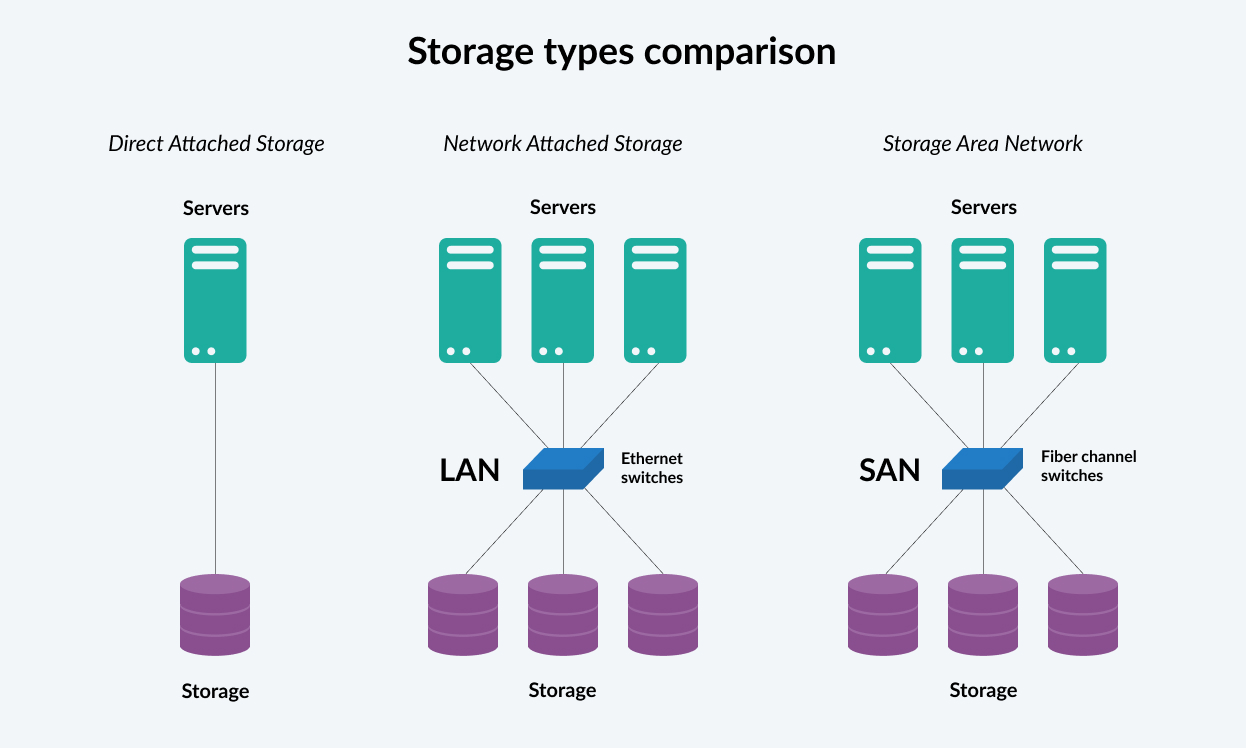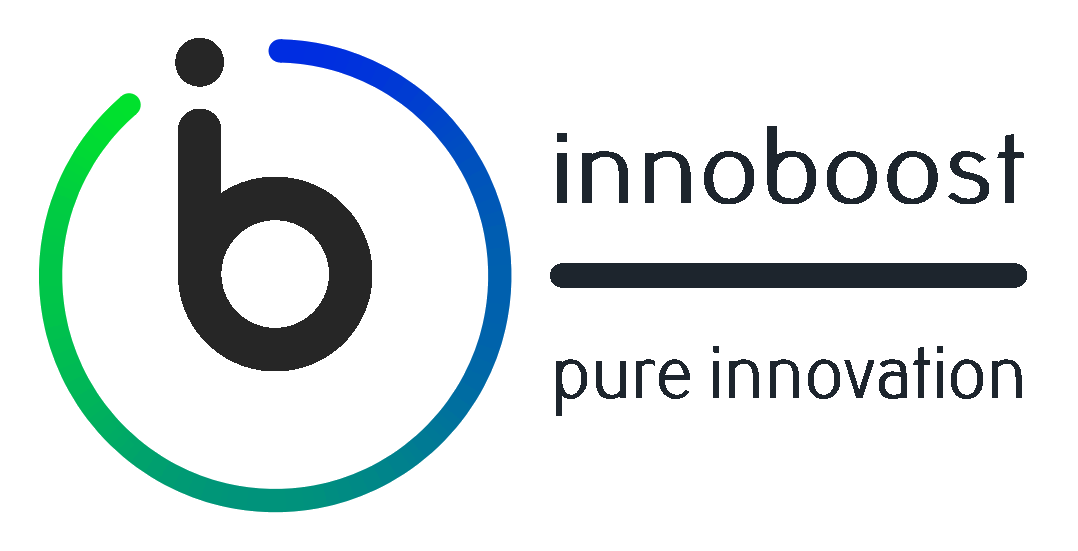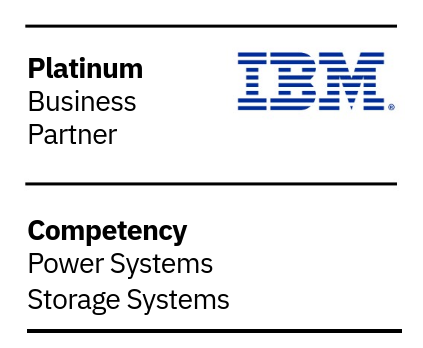What is Enterprise Data Storage? – Definitive Guide
5 min read
Summary
The cloud has drastically changed the way companies store data. In the past, companies had to invest in an expensive on-premise storage architecture that couldn’t be classified as either simple or sustainable. With enterprise cloud storage, companies can have different options that fit their needs without compromising flexibility and efficiency. Enterprise cloud storage is a cloud computing model that can store data either on remote servers accessed via the Internet or on-premise private cloud servers. Typically, they provide scalable, on-demand access to a shared pool of configurable resources that can be rapidly provisioned and released with minimal administrative effort.
The enterprise cloud storage market is snowballing as companies of all sizes look to take advantage of the many benefits of this type of storage, including scalability, flexibility, and cost efficiency. But how does it work, what types of storage are available, and how does it differ from traditional storage solutions?
What is Enterprise Data Storage
Enterprise data storage is a (centralized) repository used to store, manage and protect critical business data. It’s a vital component of any business continuity and disaster recovery plan.
Enterprise data storage typically includes on-premises storage solutions such as SANs and NAS devices and cloud-based storage services. Enterprise data storage must be highly available, scalable, and secure to meet the needs of today’s businesses. The right enterprise data storage solution can help companies to improve efficiency and competitiveness.
Types of Enterprise Data Storage
There are three types of enterprise data storage: SAN, NAS, and DAS.

SAN or Storage Area Networks are specialized, high-speed, block-based data storage networks. A SAN uses fiber optic or copper channels to connect to servers and is typically used for mission-critical applications that require high performance and fast connections, such as databases.
NAS is a Network Attached Storage system and is file-based. NAS systems use NFS or CIFS protocols to connect to servers. NAS systems are typically used for file sharing and collaboration because they store files on a device available to users in different locations. NAS devices store content on hard drives (some of them even support SSDs), such as documents, films, music, and images. They are an excellent alternative for smaller businesses that need on-site backups.
DAS is a Direct Attached Storage system and is also file-based. DAS systems are typically used for backup and archiving purposes and use SATA or SAS protocols to connect directly to servers, like external HDDs and SSDs. Direct-attached storage provides users with a fast way to access their computer storage. It’s fast but could be more flexible, as access is only possible on the computer to which it’s connected.
SDS is a Software-Defined Storage that allows corporations to adopt a policy-based data management that enables users to separate their stored data from the underlying hardware platform that produced and stored data. Essentially, this approach makes users stored resources programmable, resulting in increased flexibility, efficiency, and, most importantly, scalability adaptable to any type of enterprise.
Flash Technology or Flash Storage entails using Solid-Stage Drives (SSDs), which are constructed of flash memory (also called “An All-Flash Array”), and used to store massive amounts of data. Flash technology is an incredibly efficient alternative to using Hard Disk Drives (HDDs) for storing your data, as it offers vastly faster input/output (I/O) operations.
The importance of cloud storage
Cloud storage provides businesses with flexible access to computing power, memory, and data storage. This allows them to access stored data from a remote location with the guarantee that it’ll be backed up and available.
Public cloud is a multi-tenant cloud environment in which multiple customers share the same computing resources. An independent cloud provider owns and maintains the infrastructure, and customers receive access on either a subscription or pay-as-you-go basis. Public cloud providers typically offer a wide range of services, including infrastructure, platforms, and applications.
In a private cloud, the database and infrastructure are only accessible to one customer. Private clouds are typically hosted on-site in the customer’s data center. There are also differences in management models, as companies can manage everything themselves or outsource some or all of the management to a third-party provider. Private cloud storage is suitable for companies with sensitive data in highly regulated sectors such as healthcare or finance.
A hybrid cloud is a combination of public cloud and private cloud that forms a unified, flexible infrastructure. It allows organizations to choose the appropriate cloud deployment type for each application or workload. In 2020, the hybrid cloud market was worth $56 billion, expected to grow to $145 billion by 2026, with IBM being one of the largest cloud computing providers.
What is CTERA
The challenges ahead
Modern IT enterprises have faced many constraints, especially in recent years. And with expensive on-premise storage hardware, stringent security and availability requirements, remote office locations, and a mobile workforce, the challenges continue to pile up.
So to transition traditional IT enterprises and users to a cloud or hybrid solution that’s flexible, scalable, and easier to use and manage, organizations must develop an always-on environment that meets their organizational and financial needs.
Transform your business with CTERA
CTERA helps IT enterprises deliver highly secure file services from IBM Cloud Object Storage, whether on-premises, in the IBM Cloud, or as a hybrid solution. Trusted by many of the Fortune 100 and leading service providers, the CTERA Enterprise File Services platform is a multi cloud IT-as-a-service platform for storing, syncing, sharing, protecting, and governing data across endpoints, remote offices, and servers.
IBM and CTERA provide easier scalability and management to deliver the convenience of always-on storage while improving data security and regulatory compliance.
The solution also has management controls that help contain costs. In addition, compared to traditional data center storage solutions, this solution provides more business flexibility. It does so by allowing management to more quickly and easily set up storage rather than depending on a storage administrator.
The CTERA Enterprise File Services platform helps you maintain data security and better manage regulatory compliance requirements that can be difficult to meet with other public cloud services.
CTERA offers many benefits
Increase productivity: boost workplace productivity worldwide with secure, distributed access to valuable content.
Increase efficiency: create a unified file services solution with a single distributed data source.
Reduce costs: Experience dramatic TCO savings compared to existing architectures.
Improve collaboration: Provide a single comprehensive solution for remote access, backup, and collaboration.
Choose your deployment: decide whether you prefer a public, private or hybrid cloud environment.
Conclusion
In conclusion, enterprise data storage is an essential part of any business. Knowing the different storage options and their benefits will help you make the best decision for your needs. However, with the ever-changing technology landscape, it’s important to keep up with the latest trends to ensure your business uses the most efficient storage solution.
InnoBoost is an IBM Platinum Business Partner, a level reserved for partners who deliver high-value transformative solutions and achieve the highest levels of customer satisfaction, technical and sales certifications, and sales success.
Our skilled, agile, and certified team prides itself on delivering an unparalleled experience to its customers. From system and solution design to configuration, from price negotiation with IBM to ordering and delivery tracking, we ensure a seamless business process. We also arrange access to other partners and consultants as needed.
Get early access and information on the latest technology and our ongoing support.
Contact us today. Let’s look at your current situation and find out how we can help you improve your business with IBM solutions!
You may also like…
Unlocking the Power of Custom AI with InstructLab
5 min readSummary In the dynamic landscape of artificial intelligence, the ability to create models tailored to unique business needs is more than a competitive edge—it's a necessity. InstructLab, a collaborative initiative from IBM and Red Hat, is revolutionizing AI...
Strengthening Authentication in the Digital Age with IBM Verify
5 min readSummary In today’s interconnected world, the importance of robust authentication systems cannot be overstated. As digitalization accelerates, safeguarding sensitive data and critical systems has become a top priority for businesses. Effective access...
From Data Chaos to Data Confidence: Real-World Use Cases of IBM Data Product Hub
5 min readSummary In a world where data streams in from every direction—transactions, patient records, supply chain logs, and more—businesses often face “data chaos.” Instead of powering innovation, their data sits scattered in different formats and systems, making it...
Headquarters
InnoBoost SA
Route de Genolier 18
1271 Givrins
Office
InnoBoost SA
EPFL Innovation Park
Building E, Module 007
1015 Lausanne
© 2016-2022, InnoBoost SA. All rights reserved – Usage conditions – Graphic design by Emblematik Sàrl





